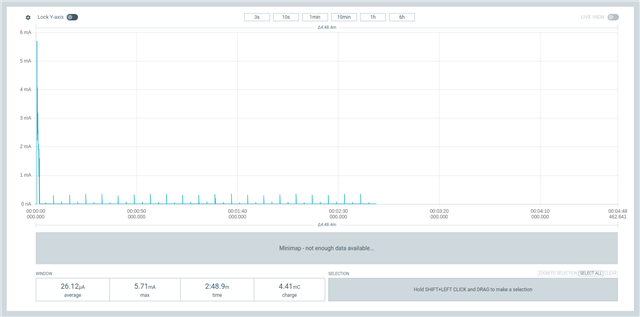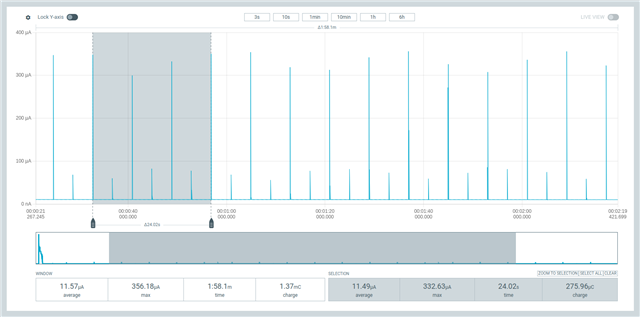

can anyone tell me what are these spikes
i am some part of my code:
_SPRINTLN(DEBUG_INFO, "LOW-PWR-SYS-ON"); // debug log to show device will enter standby state
// turn off peripherals
pm_device_action_run(uart_dev, PM_DEVICE_ACTION_SUSPEND);
pm_device_action_run(adc_dev, PM_DEVICE_ACTION_SUSPEND);
// Block (sleep) the main thread, it will wake up on GPIO interrupt or timer timeout
k_sem_take(&main_sem, K_FOREVER);
pm_device_action_run(uart_dev, PM_DEVICE_ACTION_RESUME);
pm_device_action_run(adc_dev, PM_DEVICE_ACTION_RESUME);


